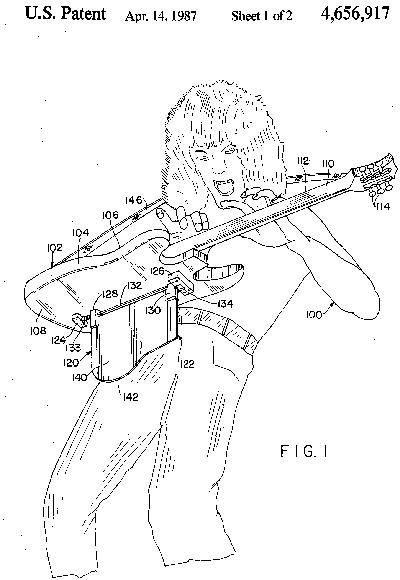How to read a patent in 60 seconds
Someone’s claiming you’re infringing their patent! You need to figure out how bad the situation is.
Or… your boss has asked you to take a look at an old patent you wrote, and see if someone else is infringing it. And you have no recollection whatsoever, because it takes an average of nearly four years for a patent to be examined, so by the time anything interesting happens you’ve forgotten all about it.
Or… you’re just reading one of eighty hojillion Slashdot stories that use the title of the patent to write a “guess what obvious thing got patented” story, but you’re smart enough to know that the title isn’t actually the invention, and are curious what the real dirt’s about.
It can take hours or days to fully evaluate a patent. When time’s short, here’s the quick and dirty way to figure out what the patent covers, usually in under a minute.
Step 1: Skip the title
The title of the patent can be just about as general as the author wants; for example, here is the the guy who patented the Tool. It often describes the thing being improved on – not the new invention. A patent titled “Virtual Desktop Manager” does not actually patent virtual desktops; it covers a particular set of features of a specific virtual desktop management implementation.
Step 2: Skip the drawings
 Patent drawings are mostly similar to high school notebook doodles except that they cost $5,000. They’re generally impossible to read and only indirectly have a bearing on the enforceability of the patent. The occasional exception exists: the incredibly edifying flowchart. The drawings that look like a giant gummy bear (because the invention is, actually, a giant gummy bear).  And sometimes… sometimes, a picture is simply worth a thousand words. Particularly when that picture depicts the inventor, one Mr. Edward L. Van Halen, demonstrating proper use of his invention.
Patent drawings are mostly similar to high school notebook doodles except that they cost $5,000. They’re generally impossible to read and only indirectly have a bearing on the enforceability of the patent. The occasional exception exists: the incredibly edifying flowchart. The drawings that look like a giant gummy bear (because the invention is, actually, a giant gummy bear).  And sometimes… sometimes, a picture is simply worth a thousand words. Particularly when that picture depicts the inventor, one Mr. Edward L. Van Halen, demonstrating proper use of his invention.
Step 3: Skip the abstract
In other fields, the abstract is your best friend: a short, direct summary of the major points of a paper. Patent abstracts are at best meandering and hard to read, and at worst deliberately misleading (so you think you’re in the clear, do whatever you planned to do, and then get sued anyway because the abstract has no bearing on the enforceability of the patent).
Step 4: Skip the specification
Now we’re getting to the meat of the patent! And also skipping it. You don’t care about the background, or the field. You don’t much care about the related art. The brief summary of the invention doesn’t tell you what’s important; the description of the drawings is generally incomprehensible (unless it’s Edward L.). And the detailed description will send you catapulting in to catalepsy, while simultaneously not separating what’s actually novel and invented from the stuff that everyone knows already.
Step 5: Find the independent claims, and read them
The claims are the only part of the patent that have any actual legal enforceability. While they’re still a pain to read, they’re forced to be one sentence so at least they’re relatively short (modulo the occasional run-on sentences half a page long). They can be wicked difficult to parse in detail, but a skim will get you pointed in the right direction. This page also offers a decent primer.
Step 6: Back to skipping – toss the dependent claims
Any claim that starts with “The _____ of claim _____” is essentially a refinement or detail with narrower scope than the parent claim – if you infringe the baby, you’ll infringe the daddy too. Skipadoodle.
And that’s it!
Getting sucked in to a patent dispute is no good for any entrepreneur. By the time it’s done, you may be able to recite 40 pages of patenteese by memory, and have learned your Markush from your Jeppson. But if all you need is a quick summary, just cut directly to the independent claims. You’ll be done in a minute.
Big thanks to Adam Philipp at Aeon Law (who I use and heartily recommend) for giving this article a sanity check. Also huge thanks to Tom Huseby, who introduced me to this clever trick.
Bonus information: how the patent office reads your patent
Pretty much the same way, most of the time. They read the independent claims, then reference the drawings, and then move to the specification if a term or concept is unclear. If you’ve got more than a minute, you won’t do wrong by following their example.
(You might want to subscribe or follow me on Twitter so you don’t miss new articles)